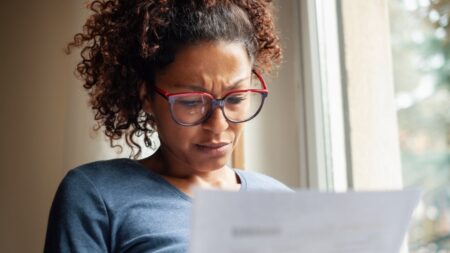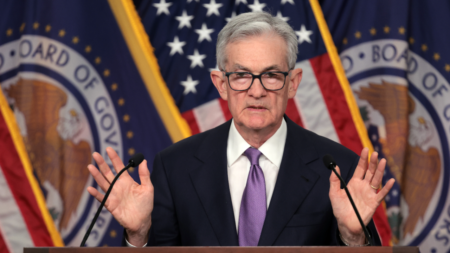The Federal Reserve appears to be declaring a small victory against high inflation, announcing at its September meeting plans to cut rates for the first time in years.
But, even with a rate cut, credit card rates will remain at record or near-record highs for a while.
The Federal Reserve’s string of interest rate hikes beginning March 2022 has taken its target rate, to which card rates are tied, to a current range of 5.25 percent to 5.50 percent. At the Federal Open Market Committee (FOMC) meeting on Sept. 18, 2024, the Fed’s rate-setting body announced a rate cut of half a percentage point.
Credit card interest rates remain high
Even with this incremental rate decrease, subprime cardholders still must contend with high rates brought about by the Fed’s rate hikes over the last two years as well as the reality that unsecured debt always comes with high interest rates.
When the Fed hikes interest rates, credit card issuers typically follow suit with their own APR hikes. That, in turn, means cardholders wind up paying even more interest to borrow money. As of late early September 2024, the average credit card interest rate stood at a very high 20.78 percent, according to Bankrate.
“Higher interest rates mean the cost of using credit is more expensive, as consumers will pay more in interest — impacting those with subprime credit, who often carry a balance, more than others,” says Katie Bossler, quality assurance specialist at GreenPath Financial Wellness, a nonprofit credit counseling service.
People with low credit scores tend to be charged some of the highest APRs. FICO credit scores range from a low of 300 to a high of 850, with anything below 670 considered a poor credit score. The Consumer Financial Protection Bureau (CFPB) defines a subprime credit score as anything below 619.
Good news and bad news for subprime borrowers
While the Fed’s rate decrease is a welcome move for those struggling with debt, it likely won’t mean much in terms of saving on interest. The reality is that many subprime cardholders will still be facing extrememly high APRs even after a decrease.
Still, a season of rate decreases rather than rate hikes should be a welcome change, as rate hikes can have an outsized impact on subprime borrowers.
Bruce McClary, senior vice president of communications at the National Foundation for Credit Counseling, points out that for a subprime cardholder, an APR hike might be aggravated if the cardholder has recently made late payments or maxed out their credit limit. Both of those circumstances could lead to a card issuer raising your APR. The effect of already high interest charges on subprime consumers will likely be much greater than the impact for consumers with higher credit scores.
“The higher likelihood of missed payments adds to the cost of repayment for those most likely to face a strong headwind of financial challenges,” McClary notes.
Subprime card delinquencies have gone up
Credit card delinquency rates — or debt that’s at least 30 days past due — for subprime borrowers had risen to 15.68 percent by the third quarter of 2023, from 11.12 percent in the first quarter of 2022, when the Fed first raised its target rate. Also, with banks tightening lending standards in 2024 for those with lower credit scores, subprime borrowers are finding it harder to qualify for new cards.
Against this backdrop, credit card debt remains high, increasing by $27 billion to $1.14 trillion in the second quarter of 2024, according to the Federal Reserve Bank of New York.
Subprime borrowers remain at risk
Subprime borrowers are not out of the woods yet, though, in the current economic climate. In June 2022, the U.S. inflation rate had increased to 9.1 percent, the highest rate since 1981. Inflation has cooled since and stood at 2.5 percent in August 2024, according to the U.S. Bureau of Labor Statistics.
“Many of the people we at GreenPath speak with are looking for ways to cope with inflation,” says Bossler. “The increased prices on everyday essentials from gas to groceries to utilities — and utilizing credit cards for these expenses — can lead to greater financial stress. We’ve seen a heavy need for budgeting and support services. Many of our clients are still facing reduced income and job loss.”
GreenPath has noticed troubling trends among subprime consumers and other borrowers, such as:
- Using credit cards to supplement their income
- Making only the minimum monthly payments on credit card bills
- Carrying high balances from month to month
- Maxing out their credit cards
- Relying on high-interest cash advances
How subprime borrowers can avoid danger
Unfortunately, options for subprime consumers to turn things around are limited, according to Bossler. While someone with a higher credit score might be able to take out a low-interest debt consolidation loan, a balance transfer credit card or a 0 percent intro APR card, these solutions may be out of reach for subprime borrowers.
Even if those options are off the table for now, subprime borrowers can take these steps to stay out of — or get out of — a financial jam with credit card debt:
- Pay at least the minimum due each month. “The longer you carry a balance, the more you pay in interest,” McClary says. Use Bankrate’s minimum payment calculator to see how long the minimum might take you to pay off your balance.
- Pay your bills on time. Payment history represents 35 percent of your FICO score, making it the most important scoring factor.
- Use less than 30 percent of your available credit. The amount of debt you owe compared to your total credit available makes up 30 percent of your FICO score.
- Reduce your credit card debt. Carrying a lot of debt, or carrying balances on credit cards for a long time, can weigh down your credit score. Work to lower what you owe through strategies like debt consolidation or a balance transfer card.
- Regularly review your credit reports and credit scores. The three main credit bureaus allow you to purchase your credit score. You can also request your credit reports for free.
- Let your issuer know. If you think you might miss a payment, contact your card issuer to ask about the possibility of changing your due date or making other payment arrangements.
- Reach out for help. A nonprofit credit counseling agency may be able to help you tackle your credit card debt.
Read the full article here
















